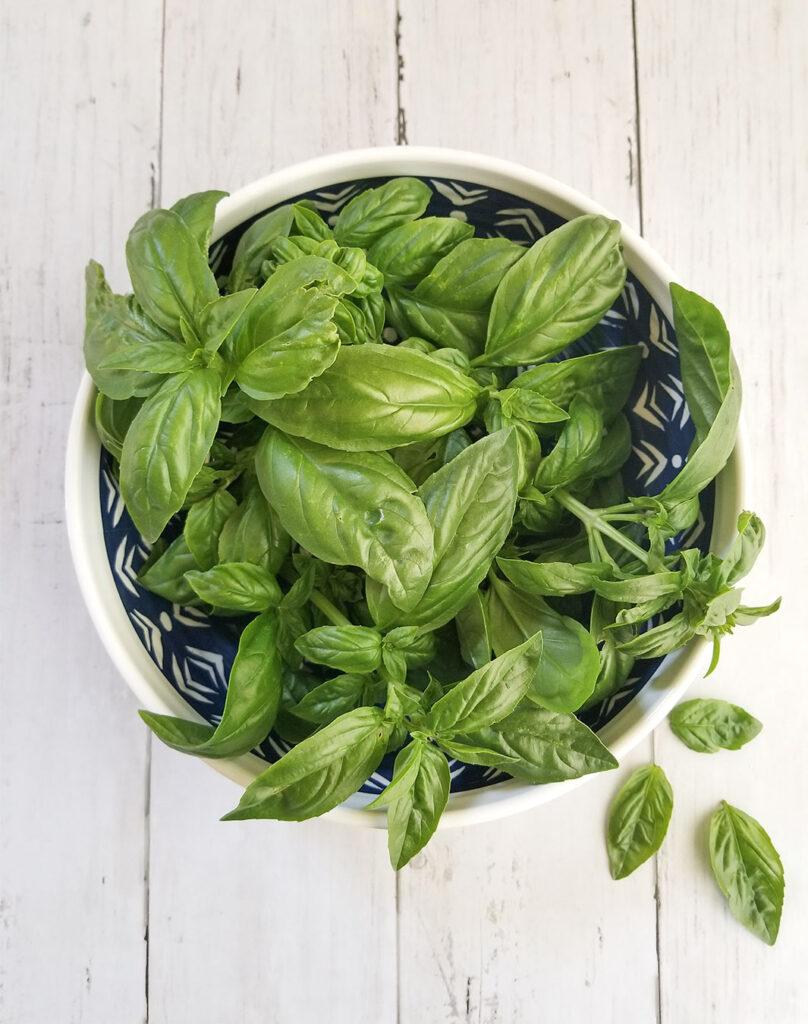
Who knew there were so many different ways to dry your herbs?! Okay, so maybe we are a little late to the drying party, but we want to share a new trick we learned! To dry basil previously, we simply harvested our basil leaves, washed them and laid them out to dry naturally. But thanks to Pinterest, we learned we were doing it all wrong and the most time-consuming way! We found the quickest way to preserve fresh basil is by drying it in the microwave.
Easy Method on How to Dry Basil
- Wash basil and remove leaves from stems. Allow the basil to dry completely, we like to let the leaves air dry on paper towels.
- Lay the basil leaves out in a single layer on a paper towel. Place the paper towel on a microwavable dish. We used the glass turning plate in our microwave. Cover the leaves with an additional paper towel.
- Microwave for 30 seconds. Check the basil and feel the leaves to see if they are crisp. If the leaves still feel soft, microwave them for an additional 15 seconds. Continue to microwave in intervals of 15 seconds until leaves become crisp. Do not over do it, or the leaves will turn brown.
- Let the dried leaves cool. You may crush them with your hands, or leave them whole. Store the dried leaves in a glass jar in a cool place.
It’s so simple to do, and saves you so much time, so you can enjoy your dried herbs much faster than by waiting for them to dry out naturally! Also, drying your own herbs, guarantees that they will be fresher than store-bought.
While we’re talking basil, let’s also talk about the best methods for harvesting and propagating your plants!
Advertisement
Harvesting/Cutting Basil Leaves
To encourage growth in your basil plant, the best way to harvest the leaves is by cutting portions of the tops of the stems rather than cutting off individual leaves. You want to cut in 2-3 inch sections (depending on how tall your plant is) from different stems above the node. If you cut too much from one stem you may stunt the growth. By cutting top sections of the stems it encourages the plant to then grow 2 new branches in its place which creates a nice bushy plant.
Before you know it, you’ll have a full, thriving plant just begging you to incorporate basil into all of your dishes! If the very tops of your basil stems start to flower, pinch off the flowers immediately. Pruning your basil plant regularly actually creates new growth and a healthy plant, prolonging your ability to enjoy fresh basil all summer long and into the fall!
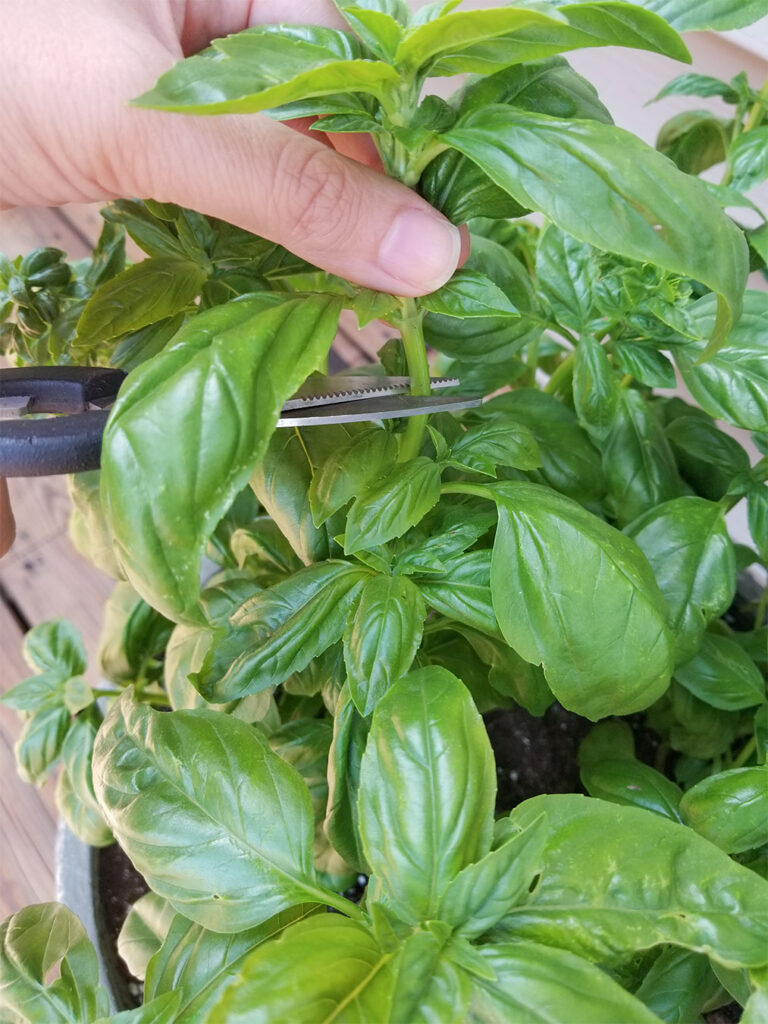
How to Propagate Basil
Basil is one of the easiest herbs to propagate (in our opinion at least!). What is propagating? It’s essentially creating new plants from an existing plant. You might be asking, why would I need to do this? Well, there are a few reasons. It’s a great way to share a healthy plant with friends and family! Our son/brother Greg planted a different variety of basil than we did, and by propagating, we are able to share different varieties with each other. Propagating your plants is also a great way to add more plants to your garden or patio without going to the store and spending money on new plants. Propagating is also a good way to create a “fresh start” if your current plant isn’t looking its best. That happened to Alexa last summer when her potted basil turned leggy and the stems turned twiggy.
So now that we’ve piqued your interest, you’re probably asking what you need to do to propagate your basil. Here’s what you need to do. Start by cutting sections from the top of the plant the same way you would to harvest it for cooking, making sure you have a decent size stem. If there are smaller leaves at the bottom of the stem after cutting, just pinch those off. You can propagate one stem or multiples at a time.
Once the stems are cut place each stem in a glass of water. You can also put multiple stems in the same glass; just make sure that each stem is in the water and you are not overcrowding the glass. Next, place the glass in a sunny spot either on a windowsill or on a table. Refresh the water every few days. It can take a week to 10 days for the cuttings to start to root. Once the stems are about ½ inch to 1 inch they are ready to be planted!
Do you grow basil or fresh herbs in your summer garden? If so we’d love to hear from you so let us know by commenting below. Plus stay up to date on our latest recipes by following us on Facebook, Instagram, and Pinterest. And get them delivered right to your mailbox by subscribing to our mailing list!
How To Dry Basil
Materials
- 45 leaves fresh basil
Instructions
- Wash basil and remove leaves from stems. Allow the basil to dry completely, we like to let the leaves air dry on paper towels.
- Lay the basil leaves out in a single layer on a paper towel. Place the paper towel on a microwavable dish. We used the glass turning plate in our microwave. Cover the leaves with an additional paper towel.
- Microwave for 30 seconds. Check the basil and feel the leaves to see if they are crisp. If the leaves still feel soft, microwave them for an additional 15 seconds. Continue to microwave in intervals of 15 seconds until leaves become crisp. Do not over do it, or the leaves will turn brown.
- Let the dried leaves cool. You may crush them with your hands, or leave them whole. Store the dried leaves in a glass jar in a cool place.

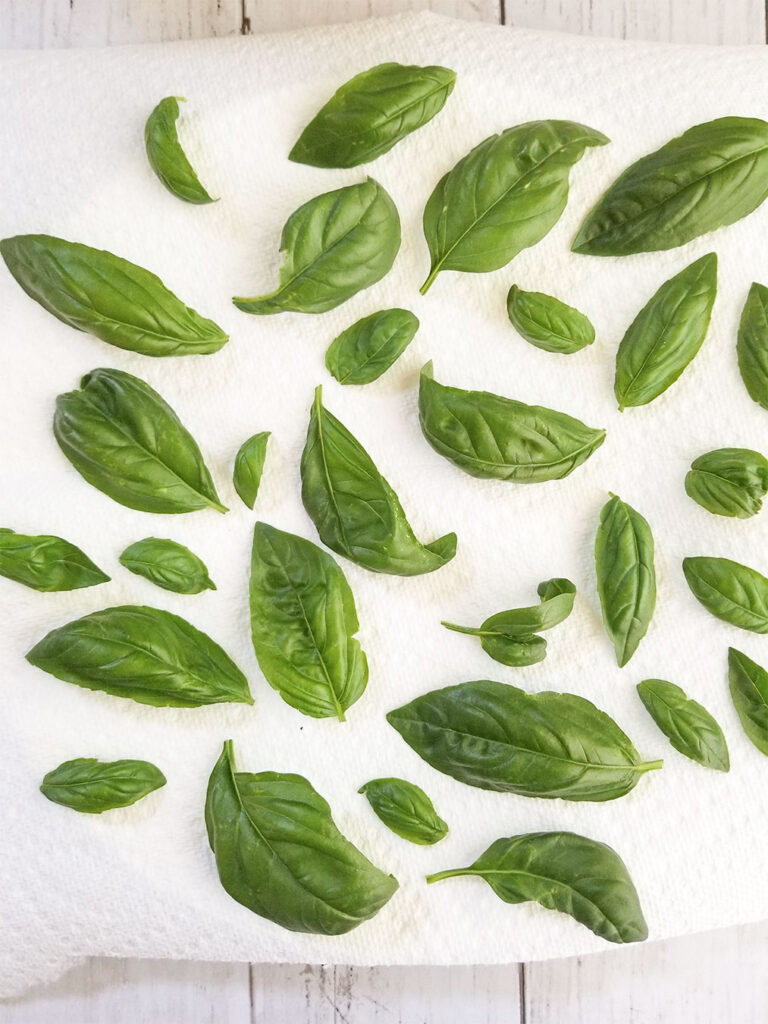
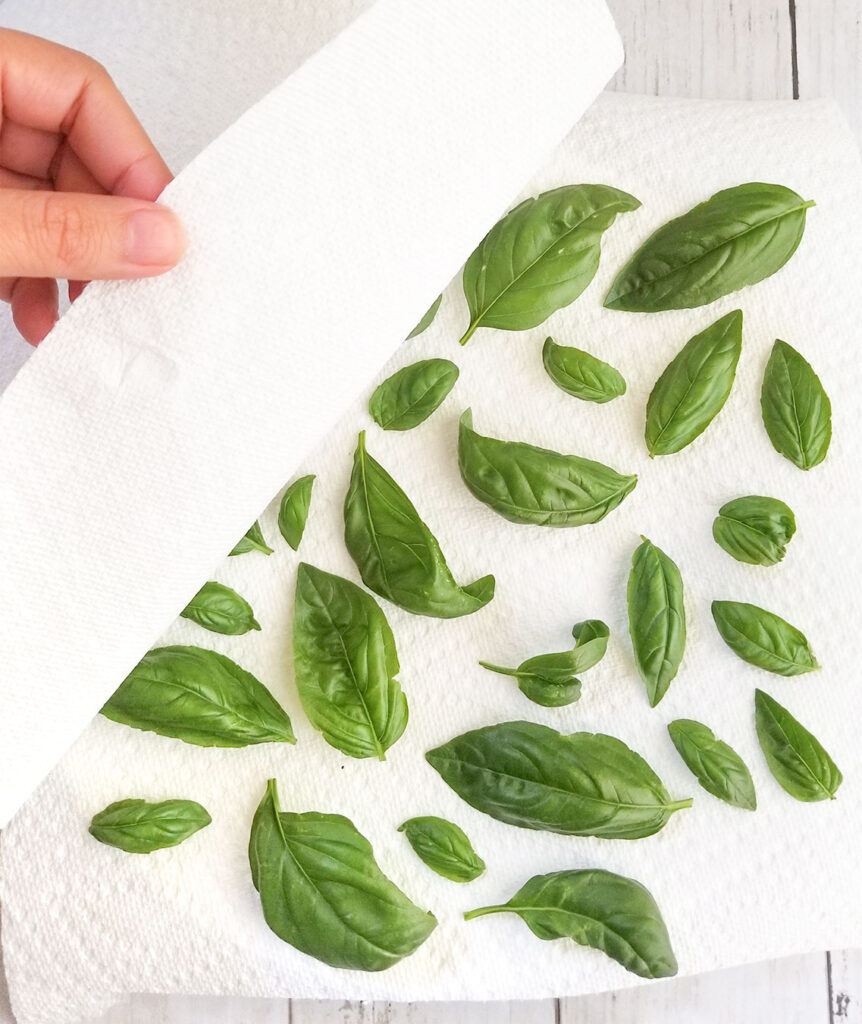
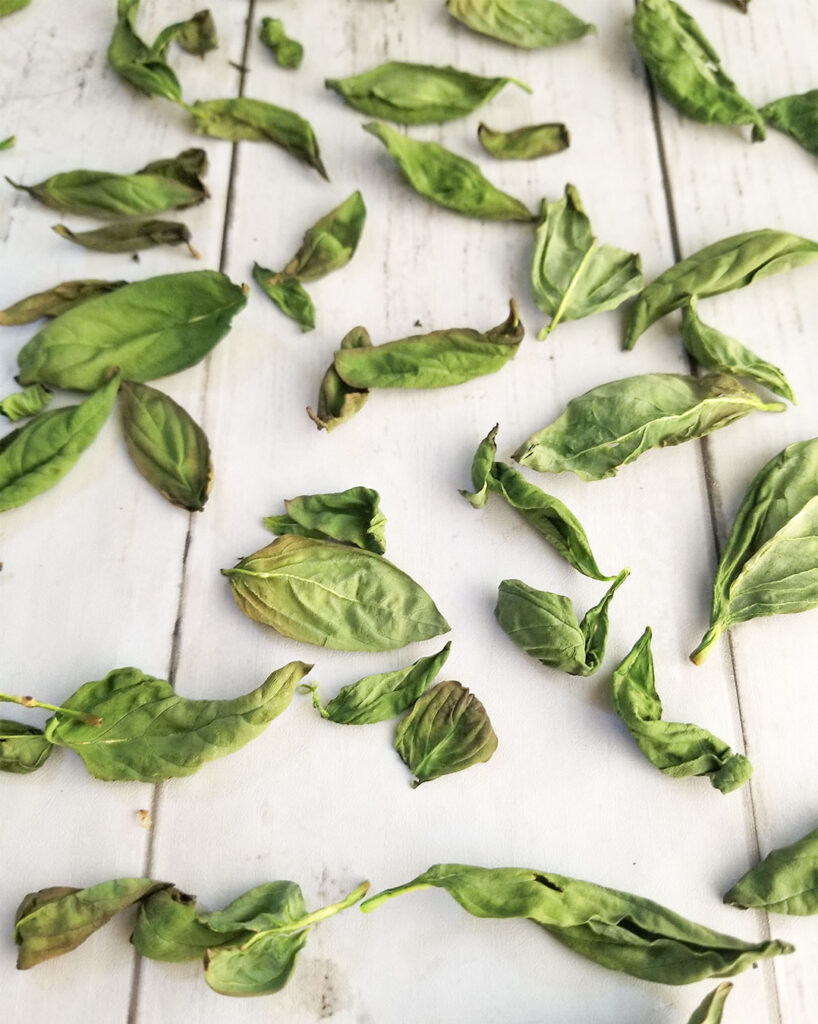
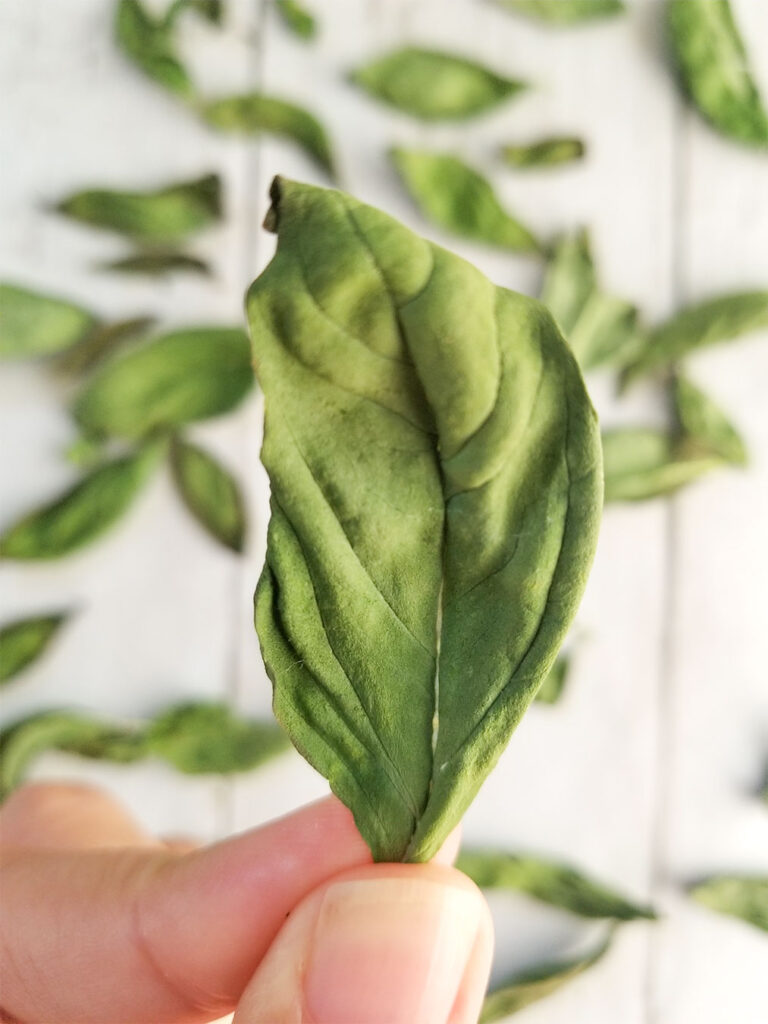
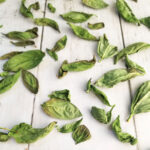

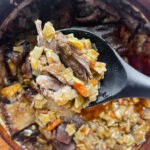





Good timely info! Could you do this with fresh dill?
Hi Karen,
Yes! You can follow the same steps, it may not take as long so just check it as you go.
-Christina & Alexa
Do I need to separate all the leaves with Greek basil.?It grows in such tight clumps or can I just dry it banded together and air dry it?
Hi Donna,
We have never tried drying the basil banded together, we separate the leaves before the drying process. Let us know how it goes if you give air drying the basil banded together a go! New hints and suggestions are always welcomed!
– Christina & Alexa